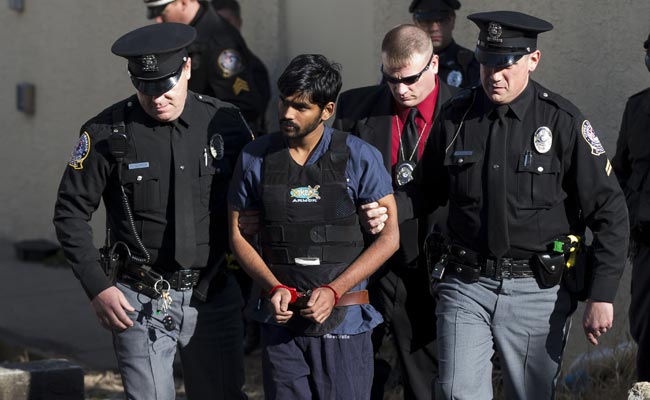
The outrage that the Delhi gangrape has triggered across the country seems to be unprecedented.We haven’t seen such a display of truthful emotions in the Indian parliament for a long time,while people are spontaneously coming out on to streets demanding action. Last time we have seen anything like this,where people were visibly angry against the establishment, was when thousands joined Anna Hazare at Ram Lila.
People wanted immediate action against an endemic problem and both the Congress and the BJP appeared to be a bit rattled. Many of us thought, justifiably, that Anna Hazare’s movement was the tipping point we had been waiting for. Every ingredient for change seemed to be in perfect measure. Still, it failed.
The Congress, the BJP, Laloo Yadavs and Mayawatis of the country effectively played out their strategy to cool off the anger and push the issue out of their limited sight. Corruption is on the back-burner now. Unfortunately, the genuine outrage and the intense grief over a young girl’s unimaginable suffering at the hands of a gang of reckless rowdies,who felt totally safe from the police and the government while dismembering her life on Delhi’s public funded roads, will also pass. Unless there is another incident sooner or later.
What is most likely to happen in this case is fast-track action against the accused. Even without any further media and public pressure, they will most likely be tried by a fast-track court and sentenced in record time. A lot of us will feel less angry and vindicated, and that will close the conversation. But what will remain unresolved, will be the fundamental issue: safety of women in Delhi. The helplines and hotlines meant for their safety will continue to be faulty as Firstpost noted immediately after the incident, inefficient and derelict police will continue to be incapable of preventing violence against women, and our sick men will continue to flash their organs, molest, rape and kill women unmindful or unfearful of the law,whether there is death penalty or chemical castration.
A very annoying case of pessimism? Why do I dare say this? Because that is what our collective life experiences tell us with unfailing accuracy – the many cases that we have witnessed in the last several years, and how the nation recoiled and then gone back to its pathetic ways. The first such case I can remember is the sensational murder of two kids in 1978 – Sanjay and Geeta Chopra – who were picked up by culprits in south Delhi.
The girl was raped and both of them were killed. Even without satellite channels and the current profusion of media, the murder outraged and pained the country. Sitting in the southern most tip of the country,we wept as teenagers personalizing the pain the kids would have gone through.
I remember how middle class parents across India were mortally worried about their children’s safety as they went to school. There were discussions on safety and security of people, policing, capital punishment and so on. Even by the standards of the seventies, the trial and sentencing were fast. The culprits were hanged to death in 1982.
If Delhi wanted to change, it could have changed in 1978 itself, 34 years ago. Even if it had set off a systemic change that takes time to work, Delhi would have been safe by now. Let me fast-forward to the present. The next case in my memory is what makes me more pessimistic. It happened just about a year ago in Kerala, and is very similar to the Delhi incident in terms of the macabre details and public reaction of anger and emotions. Sowmya, a young girl,working in a mobile shop in Kochi, was on her way home by an evening passenger train.
After a particular station, she was alone in her compartment and a disabled, puny beggar pounced on her. She ran through the compartment screaming for help; at least one man in the adjacent compartment heard her cries, but preferred not to stop the train because he wanted to get home early. The beggar-criminal overpowered her and threw her out of the train, during which she suffered serious head injuries, and carried her half-dead body to a bush and raped her. Leaving her bleeding and unconscious, the man got back to his routine of jumping from compartment to compartment begging. She later died in the hospital even as the entire state prayed for her. The incident outraged the state. It exceeded saturation coverage in Kerala’s crowded media-space.
As in the case of the Delhi incident, the discussions and questions ranged from police and railway inaction, poor investigation and conviction rates, and safety of women in trains. In this case, since it happened in a train, the media didn’t look at the larger context of safety of women in public transport. The man had a name: Govindachamy. He was Tamil, a migrant beggar,who apparently had links with criminals who operated out of trains. Reportedly, he was a serial offender and was in jail in Tamil Nadu.
A leading Malayalam newspaper did a psycho-social analysis of the man, after visiting his place of origin in Tamil Nadu and investigating his family and social backgrounds. He seemed to be a perfect sociopath, conditioned to be a criminal by his family, and even had a criminal record. But, right under the nose of the Kerala and Railway police, he operated in the most used public transport system in the state. The incident happened in February 2011.Women politicians, poets and activists genuinely cried for the victims and the politicians both demanded and assured action to ensure safety of women in trains. “Not another Sowmya in the state,” was their refrain. Govindachamy got a fast-track trial and he was sentenced to death in record time.
For his crime in February, he got the noose in November. End of story. What happened to safety of women in the trains? Practically nothing. Immediately after the incident and several months later, TV channel reporters boarded passenger trains and showed that they were still unsafe for women. Lonely compartments, unlit and scary railway stations, ladies compartments that were attached at the far end of trains and no security forces – every element of risk that made Soumya a sitting duck was still the same.Women passengers said that they were scared to travel by these trains, but had no other option. What happened to the politicians who demanded and promised action? What happened to the government assurances? What happened to all the poetry and tears? The story is forgotten now. After a year of outrage and pain, everything is back to square one.
Women continue to travel in fear of a lurking criminal somewhere. The Railways haven’t been able to even prevent suspicious men moving across train compartments as beggars. I am afraid the same might happen in Delhi too. Because as a nation,we are a failure. While only a social transformation and fear/respect for law alone will be able make lasting changes,we need preventive and rapid-response systems in place.
Such systems should ensure that incidents like the gangrape rarely happens. For that we need all government-arms working in unison (multi-sectoral action), to be in a constant vigil and permanent readiness 24/7, year after year. It needs commitment, money, machines and people, without or without public outrage. Remember,when former prime minister Indira Gandhi was shot, she had to be taken to the hospital in the backseat of a car because the driver of her dedicated ambulance was out having tea.





Be the first to comment